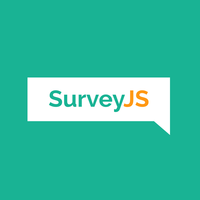Description
Lightweight spaced repetition-based learning site. With text formatting. With images and gifs. Accessible. Free forever, open-source.
Memcode alternatives and similar libraries
Based on the "Frameworks" category.
Alternatively, view Memcode alternatives based on common mentions on social networks and blogs.
-
bootstrap
The most popular HTML, CSS, and JavaScript framework for developing responsive, mobile first projects on the web. -
Semantic UI
Semantic is a UI component framework based around useful principles from natural language. -
w2ui
UI widgets for modern apps. Data table, forms, toolbars, sidebar, tabs, tooltips, popups. All under 120kb (gzipped). -
DataFormsJS
🌟 DataFormsJS 🌟 A minimal JavaScript Framework, standalone React and Web Components, and JSX Compiler for rapid development of high quality websites and single page applications. -
Active CSS
The epic event-driven browser language for UI with functionality in one-liner CSS. Over 100 incredible CSS commands for DOM manipulation, ajax, reactive variables, single-page application routing, and lots more. Could CSS be the JavaScript framework of the future?
SurveyJS - Open-Source JSON Form Builder to Create Dynamic Forms Right in Your App

* Code Quality Rankings and insights are calculated and provided by Lumnify.
They vary from L1 to L5 with "L5" being the highest.
Do you think we are missing an alternative of Memcode or a related project?
Popular Comparisons
README
Memcode
Flashcards for coders and scientists. Open-source, free for all.
Links
Website: memcode.com
Patreon: patreon.com/memcode
Email: [email protected]
Twitter: twitter.com/memcodeapp
Alternative.to: alternativeto.net/software/memcode/about
Contributing
First of all - you are very welcome to contribute, Memcode is a joint effort.
Feel free to ask questions/propose features in github issues, or join our developer Slack (please write to [email protected] to request access).
Note: if you'd like to use online development environment, try Gitpod.md (might need some adjustments). The steps below are for the local setup.
Create a database postgres user with a password.
- Install PostgreSQL.
- Go to postgres console:
psql postgres. - Create a
postgresuser with password:CREATE ROLE postgres WITH LOGIN PASSWORD 'postgres';. - Give the user a permission to create dbs, own all extensions, etc.:
ALTER ROLE postgres with superuser;.
Copypaste environment variables.
- Either copy the example environment file with
cp env.example.js env.js, and insert the required values yourself, - Or write to [email protected] and I will send you a ready
env.jsfile. In either case, you will need to insert your ownDB_USERandDB_PASSWORDthat you created in the previous step.
Install the needed libraries.
- Install npm.
- Run
npm install
Set up the database.
- Create a new development database 'memcode':
make db-reset. This will create the raw database for you - schema, a few necessary database rows, and nothing else. If you would like a bigger database to have something to work with, please write to [email protected], and I will create a development dump for you.
Start code compilers and server.
- Run
make allin your terminal. This will start: make backend-webpack(compiles the backend code on every change)make frontend-webpack(compiles the frontend code on every change)make start(starts the node server) for you.
You can also run these separately if you wish to see the individual output.- Go to http://localhost:3000, and enjoy the development!
*Note that all licence references and agreements mentioned in the Memcode README section above
are relevant to that project's source code only.

